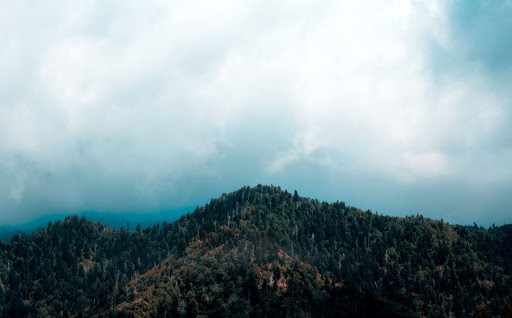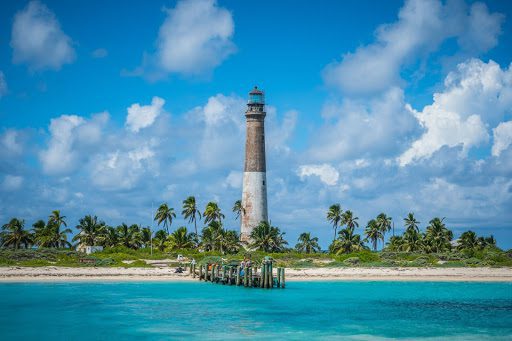The last year has been like no other. We have had to alter the way we do business, the way we shop, and the way we socialize. It is no surprise that we have also altered the way we vacation. Even with strict rules, flying on an airplane during a pandemic is less than appealing. That is why Americans across the country have swapped their traditional holiday plans with an activity that is natural and naturally socially distanced – camping! And what better place to hone your camping skills than one of the parks run by The National Park Service?
The National Park Service (NPS) is an agency of the federal government that manages all of the national parks. It was first established in 1916 through an act of Congress, but we can all thank President Teddy Roosevelt for his many acts of conservation that eventually spawned the Park Service. The NPS’s mission states that it “preserves unimpaired the natural and cultural resources and values of the National Park System for the enjoyment, education, and inspiration of this and future generations.” Most of us have been to at least one national park location without even knowing it: the Grand Canyon, Yosemite, even the White House are all NPS locations.
Over the past 12 months, we have learned that outdoor activities can be safe – even in a pandemic. That is probably a big reason why people have decided to relive their scouting days, not to mention the cost of entry into the world of camping is fairly low (especially compared to a visit to an amusement park). The majority of campground travelers these days are looking for locations that are closer to home and can be reached in a few hours of driving. A quick visit to the NPS website will provide you with all of the necessary information needed for finding places near you. If you are specifically looking for camping, take a look at the NPS’s interactive map to learn more about the 130+ locations that offer camping opportunities. Some campgrounds have limited camping areas, so make sure to research your location thoroughly before loading up the woody wagon.
You’ve made it to a National Park; now what? The variety of activities available at each park is as wide-ranging as the parks themselves. Hiking, skiing, swimming, horseback riding, fishing, canoeing, and even spelunking are just a few of the activities that can be found at National Parks. From the caverns of Mammoth Cave to the peaks of Yellowstone, whether you’re a newbie or a seasoned outdoorsman, there are plenty of activities to keep you entertained. And if you are looking for a remote office or classroom, some parks offer cellular service and Wifi (check the basic info under each location). Wouldn’t it be great to have a real waterfall as your Zoom background?
Another great way to experience the great outdoors is through the windshield of an RV. Sleeping in a hotel room that is shared by hundreds of people annually also can be a turnoff, so why not take your accommodations with you! Recreational Vehicles, or RVs, serve as a hotel room on wheels. They usually include sleeping accommodations for four or more people, a kitchenette, and even a bathroom. Many National Parks allow for RV parking and utility hookups. As always, be sure to check the specific locations you’d like to visit to ensure your vehicle is welcome. RV rentals are on the rise and it’s a great way to try out this mode of transportation. Who knows, you may fall in love with it and decide to purchase one of your own!
One of the best ways to enjoy the National Parks is by purchasing one of their America The Beautiful annual passes. For $80, you will receive a hang tag for your vehicle that will grant you entrance to any one of the NPS locations. There is also an annual senior pass for those of you 62 years or older available for $20/year, but the best bargain by far is the lifetime senior pass for $80! These park passes also make the perfect eco-friendly gift.
While there are over 423 National Parks across the country, we’ve picked a few of our favorites to get you excited!
Grand Canyon National Park, Arizona

Everybody knows the Grand Canyon – it’s one of the most famous land formations in the world, surrounded by a national park that spans more than 1.2 million acres of stunning views and rich wildlife. Many visitors head to the South Rim, where the Mather Campground is located. Those looking for a more tranquil setting should opt for the North Rim Campground. It’s located at an elevation of 8,200 feet and borders the Transept Canyon, making for excellent views. Don’t forget to plan ahead as both campgrounds require reservations.

Great Smoky Mountains National Park, North Carolina, and Tennessee
If you’re looking to explore the wonders of nature, Great Smoky Mountains National Park is a great place to start. The park, which covers more than 800 square miles in the Southern Appalachian Mountains, is world-renowned for its biological diversity and animal life, with more than 19,000 documented species. You’ll find 10 developed campgrounds here. The most popular is Cades Cove Campground, which provides ready access to hiking trails, fishing, horseback riding, and other activities.

Dry Tortugas National Park, Florida
Campers looking for a remote experience will find plenty to like at Dry Tortugas’ Garden Key Campground. The site can only be reached by a daily ferry or private boat. Once you get there, you’ll be surrounded by beaches, blue water, clear skies, and the historic Jefferson Fort, which you can explore during daylight hours. Provisions such as water, food, and charcoal will have to be packed ahead of time. Campfires are not allowed on the island.

Yellowstone National Park, Wyoming, Montana and Idaho
America’s first national park is the place to visit if you want to see grizzly bears, elk, bison, wolves, more than 1,350 species of vascular plants – and of course, Yellowstone’s famous geysers. More than 2,000 campsites are available here. If you like to combine camping with fishing, check out Slough Creek Campground. It’s pretty small, with only 16 sites, but it’s located in the heart of the Lamar Valley along the banks of a creek renowned for its fly fishing. Space is available on a first-come-first-serve basis from May to October.

Yosemite National Park, California
Nearly a dozen different campgrounds are located within Yosemite, which covers 1,200 square miles in the Sierra Nevada mountain range. To get unobstructed views of the famous Half Dome granite wall, head to the Lower Pines Campground in the heart of the park. This 60-site campground is located near some of the Yosemite Valley’s best sights and trails and is open from April to October. Reservations are required and fill up quickly, so your best bet is to reserve a site a couple of months in advance.





